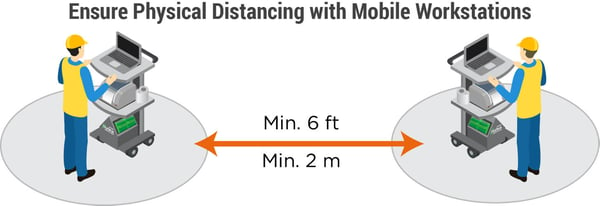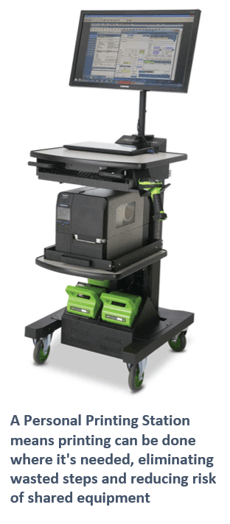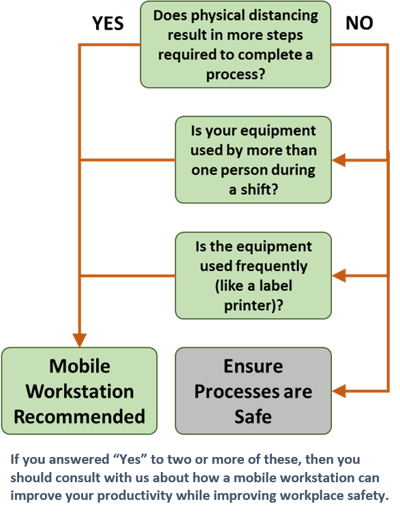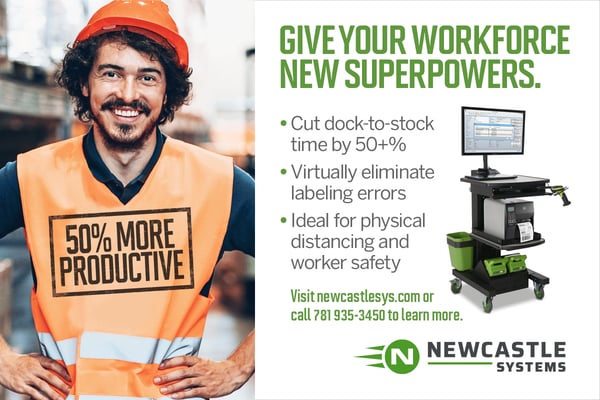
Adapting To The Unexpected Future
If there is one aspect of the COVID-19 crisis in 2020 that will remain with us perhaps permanently is the way we space ourselves from each other in the workplace. Over the last three months, entirely new protocols that no one could have anticipated are now the norm. Beyond the basic ones addressing general hygiene practices like hand-washing and disinfection routines, entire industries are re-tooling or re-organizing how they work to not only make it possible to reopen workplaces now, but to make them less likely to close again for another wave that might return, or in case of a new threat in the future.
Meat-packing plants are slowing their lines and spreading out their stations, large percentages of office work has moved home for good (with some businesses declaring that work from home options are permanent!), and retail and restaurant businesses are ramping up the skills and equipment needed to make up for with curbside pickup what they will perhaps never get back in foot traffic.
But what about the warehouse? There are certain places in the warehouse where personnel tend to gather for  their work, and not just the water cooler. Label printers and other shared equipment are one of them. Not only do they bring staff into close proximity, but are probably the most widely-shared device in your facility.
their work, and not just the water cooler. Label printers and other shared equipment are one of them. Not only do they bring staff into close proximity, but are probably the most widely-shared device in your facility.
Mobile Workstations = Personal Printers
One way warehouses are addressing this is by ensuring that staff can maintain workplace distancing by providing them with their own personal workstations – on wheels. Rather than sharing a stationary printer, workers with their own set of devices mounted on a cart with a powerful battery can maintain safer distances AND be more productive. How does it work?
Picture your typical Receiving process, where the staff are walking back and forth to the printer which has been set-up to print the labels going on the cases when pallets are broken down coming off the incoming trucks and containers. Facilities that have set up mobile workstations that allow the printer to be part of a full workstation actually improves the speed of Receiving by up to 50%.
Where Are The Best Places To Go “Personal”?
As a rule of thumb, the best place to migrate to the “personal” mobile workstation is in any process where employees are sharing equipment within a single shift. If you are running two shifts, then it is more practical to set aside cleaning time between shifts to disinfect and clean each workstation, but within a shift, processes that require workers to share equipment create the most risk for everyone. Also, while it is noble to think you will be allowed to “spare no expense” for safety, not every precaution is required and some may be cost-prohibitive.
For example, the ROI for getting an additional printer and putting it and the existing one on mobile-powered carts will likely be a net positive in a short time, but the same approach to duplicating testing equipment that may be far more expensive much much less utilization would provide relatively little benefit compared to the two-printer scenario in a bustling process like Receiving.
Here is a quick guide to identify areas that are good candidates for personal workstations. Review these for each process area, or for multiple areas that share any equipment:
 Not sure how to measure your existing process? Try out the Motion Meter app as a tool for documenting any process or sub-process and you will have it on hand as reference when needed too.
Not sure how to measure your existing process? Try out the Motion Meter app as a tool for documenting any process or sub-process and you will have it on hand as reference when needed too.
If you answered “Yes” to all the questions above, then a mobile workstation would be a good investment because it would provide both a safer work environment AND make up for lost productivity as a result of the wasted footsteps you’ve created to provide physical distancing.
Now Is The Time To Go Personal
As the process above might illustrate, there are a lot of very specific every-day actions that we’ve taken for granted for years that now need to be re-considered in light of the enhanced safety required to keep our DC and manufacturing floors operating smoothly and efficiently. While everyone is aware of the need for Personal Protective Equipment (PPE), and most facilities are now standardizing the acquisition and use of it along with hygiene protocols, the need for examining the risks in shared equipment has not received as much attention. This is perhaps understandable given the investment required in some cases, but given the massive disruptions created in the workplace and the economy from the pandemic, it is also a good time to think ahead beyond the immediate crisis to not only determine what is the best way to work through it, but what is the best way to prevent future disruptions like this one.











